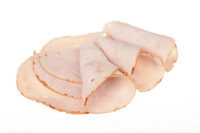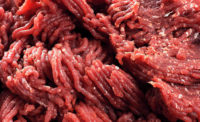There is currently a lot of interest in the food industry in reducing sodium in products, largely as the result of recommendations in 2010 by the Institute of Medicine for consumers to reduce sodium intake. At that time, the large food companies made promises to reduce sodium levels in their products by 10 to 20% in the next five years. Meat companies owned by the large food companies likely already are working on this, but the rest of the meat industry will be expected to reduce the sodium content of their products in the near future.
In the past, most solutions to reducing sodium in meat products have been based upon the use of potassium chloride as a partial substitute for sodium chloride. Considering consumer concerns that I have heard related to the use of potassium chloride, I would like to discuss some other potential solutions to this challenge.
Aside from the obvious flavor changes that occur when reducing sodium in meat products, processors also must consider changes to water-holding capacity and food safety. Water-holding capacity includes final product texture, as well as cooking yields and final product costs.
When evaluating alternatives to sodium chloride, processors need to consider consumer acceptance, the feasibility of applying new technology and the cost of implementing the new technology. Consumers are increasingly demanding clean labels, devoid of chemical names that they don’t understand. There is also the issue of the willingness of consumers to try reduced-sodium meat products, based upon previous experiences that they have had with undesirable reduced-sodium food products. It might be advisable for processors to not advertise that they are reducing the sodium levels, but to make gradual reductions over time. With each incremental reduction in sodium, flavor, texture, cooking yields and product safety should be monitored and evaluated.
There are many ingredients available in the market that can serve as alternatives to sodium chloride for maintaining flavor, water-holding capacity and product safety. Each potential ingredient should be evaluated for its impact on the label and product cost.
Sodium flavor alternatives
If sodium flavor is maintained in a reduced-sodium formulation, consumers won’t have to adapt their palate to the reduced-sodium flavors. It is believed that the flavors, textures, etc. of new products will always be compared by consumers to existing products, which further supports gradually reducing sodium levels in meat products to minimize consumer rejection of the new products.
Flake salt has been shown to increase meat pH, improve fat and water binding and increase cooking yields of products, which would allow for maintaining sodium flavor of products at lower salt levels. Since sugar and dextrose have been used to mask some of the sodium flavor in the past, removing these ingredients from products would allow sodium flavors to be maintained while reducing salt levels.
There are a lot of flavor-enhancing ingredients and salt replacers available that could enhance sodium flavors, allowing for reductions in sodium content. However, the names of these ingredients need to be considered for their acceptability on consumer labels.
Water-holding capacity alternatives
There are a number of things processors can do to maintain acceptable cooking yields and texture of reduced-sodium meat products. Before considering the addition of new non-meat ingredients, make sure that the protein functionality of the meat ingredients used is maximized by traditional processes and non-meat ingredients. Maximizing the functionality of the lean meat proteins should allow for the use of lower levels of salt, and other non-meat ingredients that otherwise would be needed to improve the water-holding capacity and texture in reduced-sodium meat products.
For example, using pre-rigor or pre-blended meat ingredients, as well as vacuum mixing and stuffing will maximize the binding capacity of the protein when making sausage products. The use of pre-rigor meat takes advantage of the opportunity to use meat at its optimal functionality. Vacuum mixing removes air from the meat, which improves protein functionality, as air (or foam) interferes with protein-to-protein bind. Pre-rigor processing and/or pre-blending would have greater impact when applied to lean meat, as the salt that is used would be focused on the contractile proteins of meat that are important to binding water and trapping fat during cooking. Increasing the contact time between the lean meat and salt to least 24 hours, if not longer, will increase protein extraction necessary for increased water-holding capacity.
Vacuum tumbling and stuffing will maximize the water-binding capacity when making whole-muscle or sectioned and formed products. To optimize the water-holding capacity of whole-muscle or chunked and formed product, a minimum of 24 hours of total tumbling and rest time is needed. Many processors have found that they can get good adhesion of pieces after 2 or 3 hours of tumbling or massaging; however, as with pre-blending, a longer hold time will increase the water-holding capacity.
There are many non-meat ingredients on the market that will hold additional water in meat products. There are a couple of things to consider with these myriad potential ingredients: Again, will the ingredient name be acceptable on a clean label? Are there allergen issues with the ingredient being considered? How much will it cost to use each new ingredient?
The non-meat ingredients that I believe best meet the clean label test are: alginate, dehydrated pork stock, potato starch, carrageenan and rice bran, as well as carrot and oat fibers. In comparing the cost of these ingredients, the cost per pound is only the first point to consider. Next, determine the amount of water that each ingredient will hold in your application. Most ingredient suppliers will quote a hydration ratio (protein:moisture) for their ingredients, but it is wise to determine for yourself how much water each ingredient holds in your product, with your cooking method, etc. Once you have determined how much additional water that you can add to your product with each ingredient, you can then calculate the true cost of each ingredient. The point is, some ingredients that are sold at a high cost per pound may actually be the best option, based upon how much water they can hold, their effect on product texture, etc.
I understand that phosphates are not desirable on a clean label, but I can’t resist mentioning them. Phosphates, along with salt, are likely the only non-meat ingredients that directly alter meat proteins to improve functionality. Plus, these two ingredients act synergistically when added together in a meat system, so a little phosphate goes a long way toward increasing water-holding capacity. One benefit of adding alkaline phosphates is that they increase the pH of the meat mixture. Any ingredient or process that results in an increased meat pH would be helpful in making reduced-sodium meat products.
Antimicrobial alternatives
There are also quite a few antimicrobial options for meat processors to use to prevent pathogen growth or destroy pathogens on meat products that contain reduced levels of sodium. These include antimicrobial agents as well as packaging and cooking methods that will enhance the safety of reduced-sodium meat products.
For preventing Listeria monocytogenes growth during the shelf life of the product, a mixture of lactate and diacetate should be added to the solution that is injected into the whole-muscle products.
Using impermeable casings or pouches, in which the product is cooked in either water or steam, reduces the chance for Listeria contamination from the environment — the product is shipped in the package or casing that it was cooked in and isn’t opened (and exposed to the environment) until the end user opens the casing or package.
For products cooked in a fibrous casing that need to be packaged after cooking and chilling, lauric arginate can be sprayed into the vacuum pouch before loading with the product, and this antimicrobial agent will kill any surface contamination from Listeria monocytogenes. When a vacuum is pulled on the pouch, the lauric arginate is pulled around the entire product, between the surface of the product and the packaging film. Lauric arginate does not need to be labeled when added at a concentration below 44 ppm. Another antimicrobial ingredient that is sprayed into the pouch at the time of packaging is octanoic acid. It is also considered a processing aid and does not need to be labeled below 440 ppm.
Because of potential environmental contamination during the packaging of products after cooking, a post-packaging pasteurization step is recommended after packaging. This process involves a surface heat treatment (either hot water or steam) to reheat the surface of products to a temperature that would destroy Listeria monocytogenes, and it has been found by USDA-FSIS to be more effective at eliminating Listeria monocytogenes than the addition of antimicrobial ingredients to products. Of course, high-pressure processing is beneficial to eliminate environmental contamination on ready-to-eat products, and would be useful in reduced-sodium products. Both post-packaging pasteurization and high-pressure processing can help with the clean-label issue.
Combining alternatives
Many of the ingredients and processes mentioned above can be used in combination in making most reduced-sodium meat products. For example, flake salt can be easily added to pre-rigor meat, or used in a pre-blend, along with potato starch, lactates and post-packaging pasteurization. Alginates could be used during pre-blending. Some processes may reduce the need for some ingredients. Pre-blending or the use of pre-rigor meat may reduce the need for some of the non-meat ingredients. Also, pre-blending may not contribute much to water and fat binding, if the meat is finely chopped or emulsified in the process. Some ingredients may serve multiple purposes, as lactates have been shown to improve water-holding capacity of meat products. In similar execution to the “hurdle” strategy in food safety, the more alternatives that you can combine, the greater chance you have of producing a reduced-sodium product that your consumers will continue to buy.






Report Abusive Comment